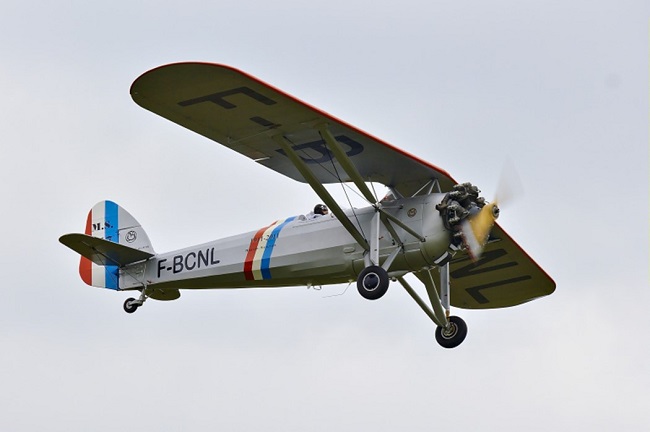By Paul Wiley
This article discusses FAA minimums for airplane pilots flying under FAR part 91 General and Operating Flight Rules. It also provides a general discussion of some of these minimums as well as recommendations for developing a personal minimums checklist. The purpose of having a personal minimums checklist is to facilitate good aeronautical decision making, including making the critical “Go/No-Go” decision. The NTSB estimates approximately 75% of all accidents can be attributed to pilot error. Undoubtedly many of these errors can be traced to poor decision making by the pilot in command. Having a personal minimums checklist and a firm commitment to following these minimums will result in better decision making and a safer pilot.
A key consideration in developing a personal minimums checklist is understanding your tolerance for risk and your personality type. New or low time pilots need to establish personal minimums which are more conservative than the regulatory minimums. It is recommended that these personal minimums be discussed and developed with the assistance of a flight instructor or a trusted and more experienced pilot friend. In general, as a pilot gains more experience, some of these personal minimums can be relaxed and moved closer to the regulatory minimums.
The FAA has established regulatory minimums for many (but not all) flight operations. These regulatory minimums for pilots encompass several areas including (but not limited to):
- ·General Experience minimums, e.g., number of take-offs and landings in the previous 90 days
- ·Weather minimums: These minimums are highly airspace dependent but prescribe ceiling and visibility minima necessary to conduct flight under VFR. See FAR 91.155 and 91.157 for VFR weather minimums.
- ·Minimum Fuel Reserves: Regulations stipulate minimum fuel required for flight under VFR (FAR 91.151) and IFR Conditions (FAR 91.167).
- ·Physiological Minimums: e.g., Alcohol/Drugs, Oxygen, crew rest

It is also very important to understand that just because there are no regulatory minimums for certain operations; this does not mean that a pilot does not need to think about and establish their own personal minimums for said operations.
The Aircraft Owners and Pilots Association’s Air Safety Institute (ASI) has developed a checklist which documents some of these required minimums as well as ASI’s recommendations. This checklist can be found at: www.airsafetyinstitute.org. A search for “Personal Minimums” will provide numerous references and is an excellent resource when developing your personal minimums checklist.
Here are some examples taken directly from the ASI website:
Flight Review:

FAA requires a flight review within the previous 24 months (FAR 61.56 (c))
ASI recommends: “a flight review within the previous 12 months; if instrument rated, the flight review should include an Instrument Proficiency Check (IPC), regardless of legal instrument currency.”
Personally, I recommend participation in the FAA’s WINGS – Pilot Proficiency Program and completion of a WINGS phase every 12 months.
General Aircraft Experience:
FAA requires no recent experience specific to make and model.
ASI recommends:
- ·For Single-engine fixed-gear: Three hours in any make and model within previous three months.
- ·For Single-engine retractable-gear: Three hours in any retractable-gear make/model within previous three months
- ·For Multiengine: Three hours in same or similar make/model within previous three months.

Day landings:
FAA requires: Three landings in previous 90 days when carrying passengers (FAR 61.57 (a)).
Tailwheel - Three full-stop landings in any tailwheel make/model within previous 90 days
ASI recommends:
One landing in previous 30 days, in addition to the FAA requirement
Tailwheel - Three full-stop landings in any tailwheel make/model within previous 30 days

Night landings:
FAA requires: Three full-stop landings in previous 90 days when carrying passengers (FAR 61.57 (b)).
Tailwheel - Three full-stop landings in any tailwheel make/model within previous 90 days
ASI recommends:
One full-stop landing in previous 30 days, in addition to the FAA requirement
Tailwheel - Three full-stop landings at night in any tailwheel make/model within previous 30 days

IFR:
FAA requires: Six instrument approaches, intercepting, tracking and holding in previous six calendar months (FAR 61.57(c)).
ASI recommends:
In addition to the FAA requirement, one hour of actual or simulated instrument flight and one instrument approach in previous 30 days; also, an IPC within the previous six calendar months.
Weather Conditions: Noted in terms of cloud clearance, ceiling, and flight visibility.
VFR: FAA requires: Airspace-dependent – no less than clear of clouds, one mile visibility (FAR 91.155).
ASI recommends:
- ·Outside traffic pattern – no less than 2,000 foot ceiling and five miles visibility
- ·Within traffic pattern – 1,500 foot ceiling and three miles visibility. Use caution in mountainous terrain.

IFR Departure:
FAA requires: None
ASI recommends: Local instrument approach minimums, so that an immediate return can be made. If the airport has no instrument approach, use minimums from the nearest suitable airport with an instrument approach within 15 minutes.
IFR Arrival: (FAR 91.175
FAA requires: Charted Instrument Approach Minimums – noted in terms of DA/DH or MDA and visibility.
ASI recommends:
- ·Precision approach: 400 feet and one mile
- ·Non-precision approach: Lowest minimums applicable plus 200 feet and one-half mile. Example: if approach minimums are 450 feet and one mile, personal minimums would be 650 feet and 1.5 miles.
- ·Circling Approach: Published minimums or 1,000 foot ceiling and three miles, whichever is higher; not recommended at night.

Crosswind component:
FAA requires: None
ASI recommends:
- ·75 percent of maximum demonstrated crosswind [as documented in the airplane flight manual]. Example: 16 (knots max demonstrated crosswind) x .75 = 12 knots recommended crosswind component
- ·Tailwheel – no more than 10 knots of crosswind
Fuel Reserve: [measured in minutes flying time at normal cruise power and airspeed]
FAA requires:
- ·Day VFR: 30 minutes (FAR 91.151)
- ·Night VFR: 45 minutes (FAR 91.151)
- ·Day or night IFR: 45 minutes. (FAR 91.151, and for flight in IFR Conditions: 91.167)

ASI recommends:
Minimum 60 minutes for all, assuming that all contingencies have been accounted for (diversions, holding, headwinds, etc.). In other words, the airplane should land with at least one hour of fuel in the tanks.
Other:
Rest (hours of sleep and relaxation in previous 24 hours)
FAA requires: None [when operating under FAR part 91]
ASI recommends: 10 hours

Alcohol
FAA requires: minimum 8 hours between consumption of any alcoholic beverage and acting as required flight crew member. This is popularly known as “bottle to throttle”. (FAR 91.17).
My personal recommendation (also the military requirement): 12 hours “bottle to throttle”.
Supplemental Oxygen (FAR 91.211)
FAA requires:
- ·Flight crew must use supplemental oxygen when above 12,500 feet cabin pressure altitude for more than 30 minutes
- ·Flight crew must use supplemental oxygen continuously when above 14,000 feet cabin pressure altitude
My personal recommendation (also the military requirement): Use supplemental oxygen continuously when above 10,000 feet cabin pressure altitude and at night when above 5,000 feet. Note: See Aeronautical Information Manual (AIM) Section 8 – Medical Facts for Pilots regarding night vision and other medical issues affecting vision.
Conclusion
AOPA’s Air Safety Institute recommends that, in addition to creating a personal minimums checklist, every pilot develop a “contract” with yourself. The VFR version of this contract is found at: www.airsafetyinstitute.org/vfrcontract .
There is also a contract for IFR at: www.airsafetyinstitute.org/ifrcontract
The contract represents your personal commitment to always fly within the minimums you have documented in your personal minimums checklist. This contract is specific to you and the airplane(s) you fly. I strongly encourage every pilot to visit the ASI web site and complete the checklist and contract. Doing this will force you to think about your current level of aeronautical knowledge, skill and how much risk you are comfortable with for each flight. ASI’s intent is that the contract be printed and kept handy i.e., in your flight bag, for quick reference. Having a contract and personal minimums checklist will better protect you, your passengers and your family.

